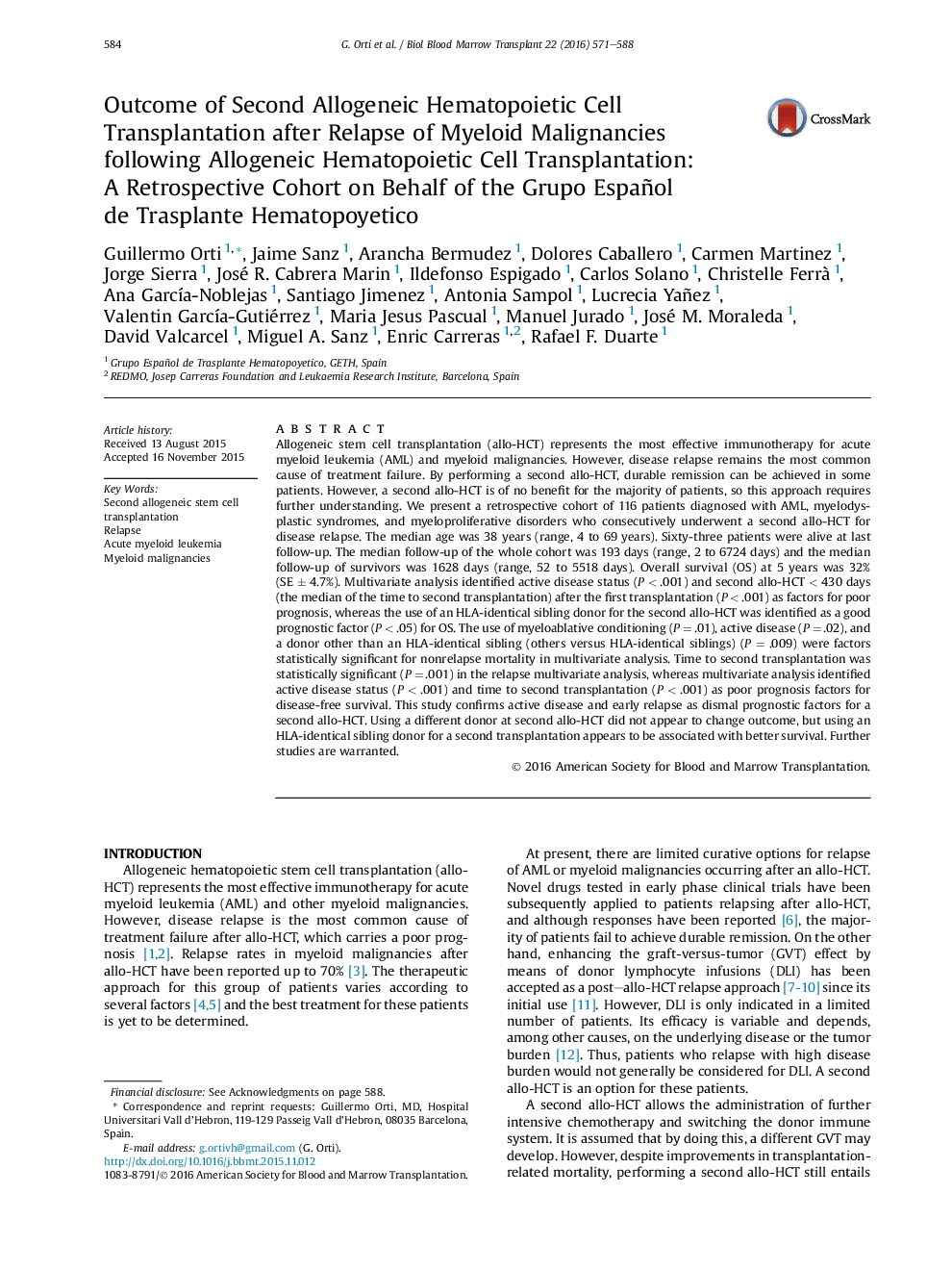| کد مقاله | کد نشریه | سال انتشار | مقاله انگلیسی | نسخه تمام متن |
|---|---|---|---|---|
| 2101816 | 1546256 | 2016 | 5 صفحه PDF | دانلود رایگان |
• Second allogeneic transplantation for myeloid malignancies is feasible for a group of patients.
• Active disease and time from first transplantation (<430 days) are associated to a poor outcome
• Using a different donor at second allogeneic transplantation did not appear to change outcome
• The use of an HLA-identical sibling donor at second allogeneic hematopoietic cell transplantation appears to be associated with better survival
Allogeneic stem cell transplantation (allo-HCT) represents the most effective immunotherapy for acute myeloid leukemia (AML) and myeloid malignancies. However, disease relapse remains the most common cause of treatment failure. By performing a second allo-HCT, durable remission can be achieved in some patients. However, a second allo-HCT is of no benefit for the majority of patients, so this approach requires further understanding. We present a retrospective cohort of 116 patients diagnosed with AML, myelodysplastic syndromes, and myeloproliferative disorders who consecutively underwent a second allo-HCT for disease relapse. The median age was 38 years (range, 4 to 69 years). Sixty-three patients were alive at last follow-up. The median follow-up of the whole cohort was 193 days (range, 2 to 6724 days) and the median follow-up of survivors was 1628 days (range, 52 to 5518 days). Overall survival (OS) at 5 years was 32% (SE ± 4.7%). Multivariate analysis identified active disease status (P < .001) and second allo-HCT < 430 days (the median of the time to second transplantation) after the first transplantation (P < .001) as factors for poor prognosis, whereas the use of an HLA-identical sibling donor for the second allo-HCT was identified as a good prognostic factor (P < .05) for OS. The use of myeloablative conditioning (P = .01), active disease (P = .02), and a donor other than an HLA-identical sibling (others versus HLA-identical siblings) (P = .009) were factors statistically significant for nonrelapse mortality in multivariate analysis. Time to second transplantation was statistically significant (P = .001) in the relapse multivariate analysis, whereas multivariate analysis identified active disease status (P < .001) and time to second transplantation (P < .001) as poor prognosis factors for disease-free survival. This study confirms active disease and early relapse as dismal prognostic factors for a second allo-HCT. Using a different donor at second allo-HCT did not appear to change outcome, but using an HLA-identical sibling donor for a second transplantation appears to be associated with better survival. Further studies are warranted.
Journal: - Volume 22, Issue 3, March 2016, Pages 584–588
